Teaching & Learning
Components of ILOs
Components of an ILO
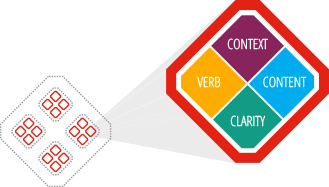
A single unit, with a weighting of 12.5%, will typically include 3 to 6 Intended Learning Outcomes (ILOs). Each of these learning outcomes will communicate one of the core purposes for teaching the unit. Taken as a group, the ILOs will make clear to students what they will be able to do upon successful completion of the unit that they have learnt through studying in it.
Intended Learning Outcomes (ILOs):
- are written from the students' perspective, using clear language that is understandable by students
- identify the type and topic of knowledge to be learnt, and what level of performance or understanding is expected
- are measurable (i.e., they can be observed, and student achievement of them can be assessed)
- link to, and are aligned with, Course Learning Outcomes (CLOs)
Typically, ILOs are comprised of 4 components: verb, content, context and clarity. Below are three example ILOs, to illustrate how the components work together.
ILO example 1
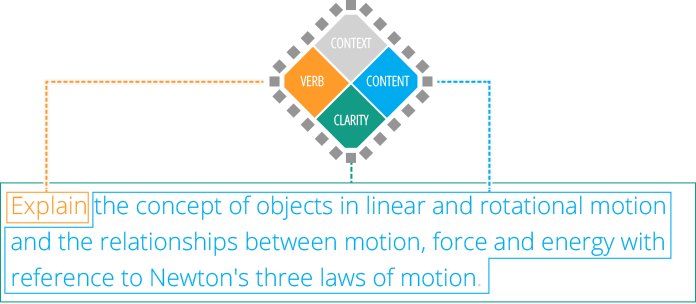
Upon reading this, a student should know one of the things they will have to do, and how well they will have to do it, in order to successfully complete the unit. It contains a verb at the appropriate level of understanding, and the content that the verb addresses, which is context-free.
This description of what a student will be able to do at the end of the unit that they could not do at the start, articulates one of the core reasons for teaching the unit.
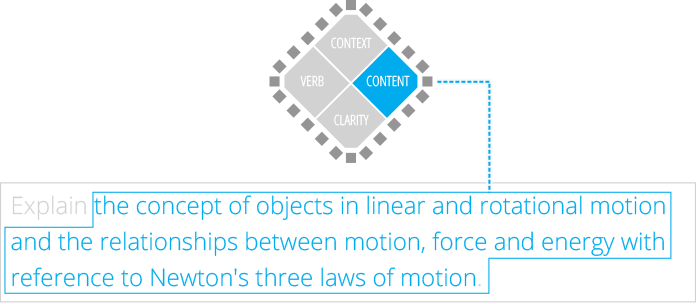
When reviewing the articulated purpose, three connected ideas were present - Newton's 3 laws, objects in motion, and the relationships between motion, force and energy.
Although having students understand the impact that the development of Newton's laws had on the study of physics may be desired by the unit coordinator/lecturer, this is a secondary purpose for the unit, with the primary aim actually being understanding and use of the laws, and thus this content is not present in the ILO. This does not mean that this should not be included in the unit, but simply that such knowledge is not a driving force of the unit.
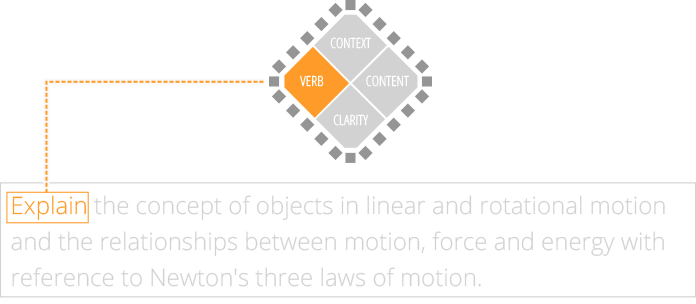
The originally articulated purpose includes the idea of explaining concepts. As a first semester, first year unit, the content is foundational, and will be addressed in different ways in later units in the course. Therefore, for the purposes of this unit, the knowledge required is declarative only, but it is important for students to be able to appreciate the significance of each part to the whole. This means that explain is a good choice as it is a declarative knowledge verb that sits at the level of understanding on Bloom's revised taxonomy, and at the relational level of the SOLO taxonomy.
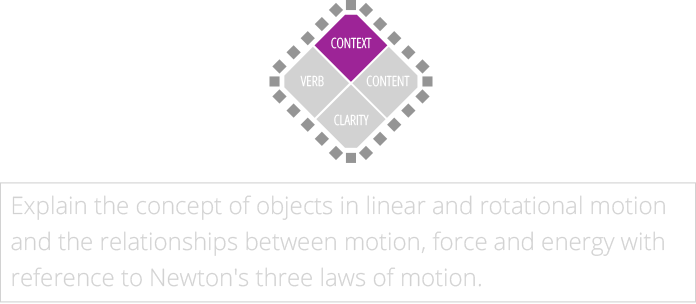
This ILO does not include a specified context. The expectation is that students will be able to explain the concepts in any context, potentially for multiple purposes. This ILO represents a foundational skill that students will need to draw upon throughout their course, and for this reason should not be limited by a single context.
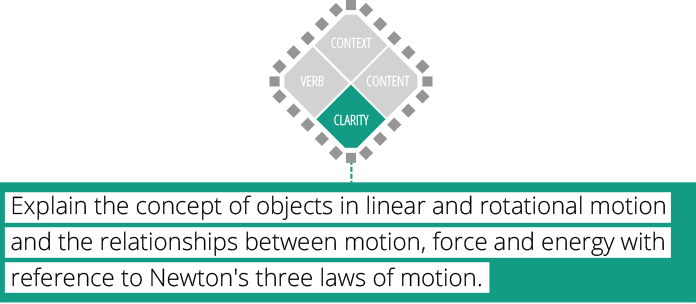
Read as a complete idea, this ILO could be understood and meaningful to a high school graduate for whom English is a second language. Although there are discipline-specific words which may not at first be meaningful to a novice, they are essential to communicate meaningfully what the student will be able to do, and could not be expressed more clearly using alternative language. A standard dictionary would be able to be used to enhance understanding, and the general idea of the ILO is clear.
ILO Example 2
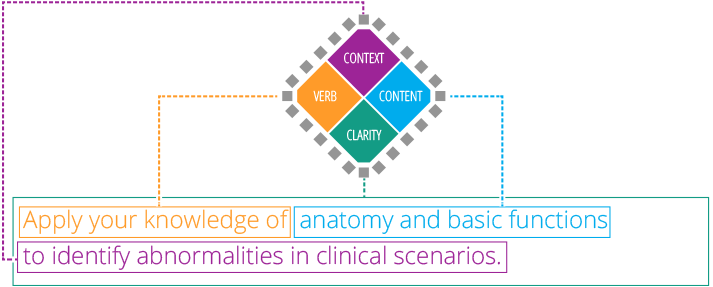
This ILO makes clear to students what they will need to know (anatomy and basic functions) and what they will need to be able to do with this knowledge (apply it in clinical scenarios to identify abnormalities) to meet the expectations of the unit.
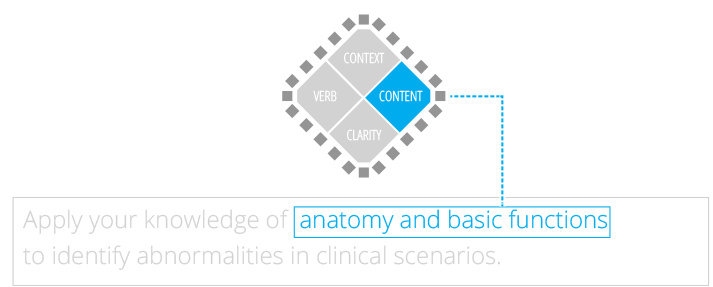
This content was identified in the initial articulation of the purpose of the unit as what students were to 'learn about'. This content would be appropriate for an introductory level unit in a course from the Faculty of Health.
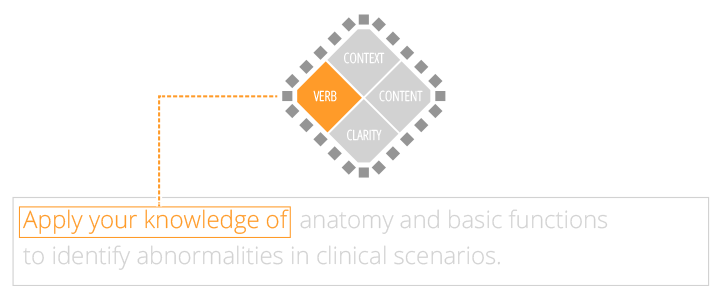
To help students understand why they are going to learn about anatomy and basic functions, the verb apply is used to indicate that they will need to put their knowledge and understanding to use. (Where and for what purpose they will apply this knowledge is indicated by the context).
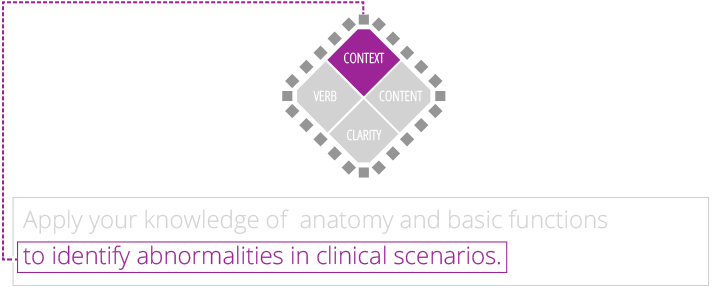
This context does two things: it confines the breadth of where the students' knowledge of anatomy and functions needs to be applied to clinical scenarios; and it specifies the purpose of that application of knowledge - to identify abnormalities.
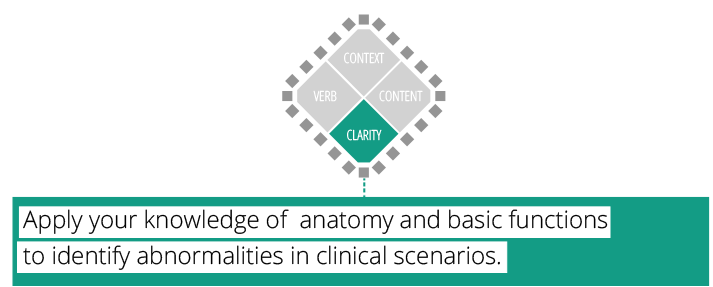
The discipline-specific words in this ILO make it less 'readable' for the general public, but they communicate essential information about what students will learn, and should be readily understood by students enrolling in the unit.
ILO Example 3
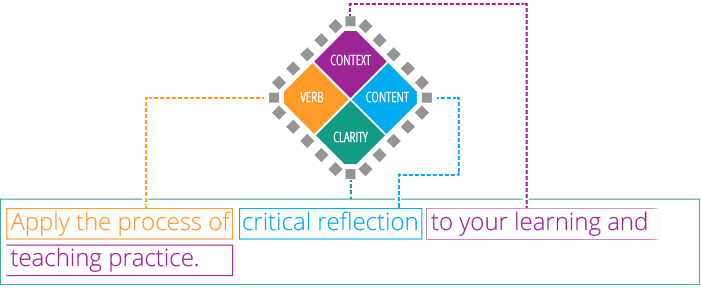
This ILO contains a verb, content and context that together communicate clearly to a novice student what they will be able to perform upon completion of the unit that they could not perform when they started.
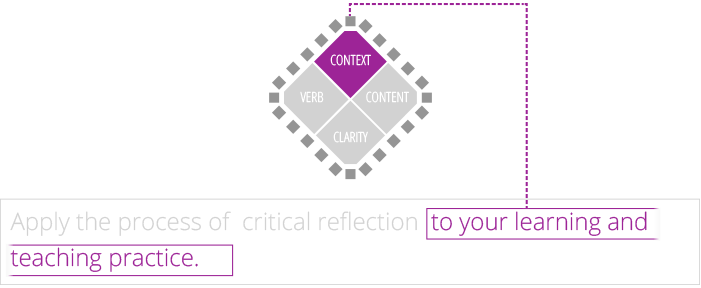
The context of this ILO is essential, as otherwise it may not identify a skill that students do not already have when they start the unit. By providing the context of the student's learning and teaching practice, meaning is added to the content 'critical reflection', and students clearly understand where and when they will be expected to be able to apply this process.
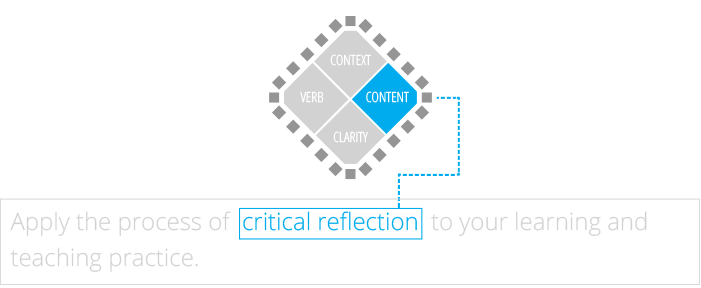
The purpose, as originally outlined, was very much focussed on the concept of critical reflection, and thus this is the content of this ILO.
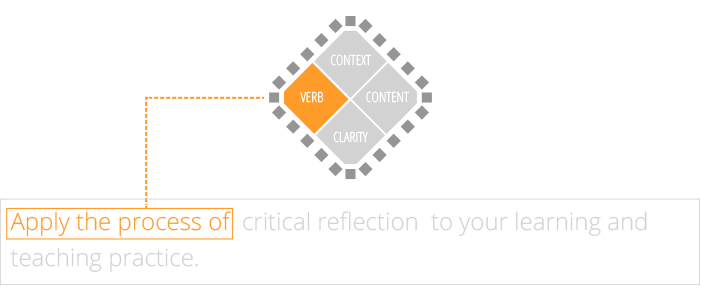
This verb describes for students that the knowledge being addressed, and learnt, is functioning knowledge, and that the focus of what they will learn and be able to do is a process. In the SOLO taxonomy this sits at the relational level, and at the application level of Bloom's revised taxonomy. Although these are not high levels of performance, as might be expected for a post-graduate unit, the content and context for this ILO ensure that the learning outcome is at an appropriate level, both for the course, and for AQF requirements.
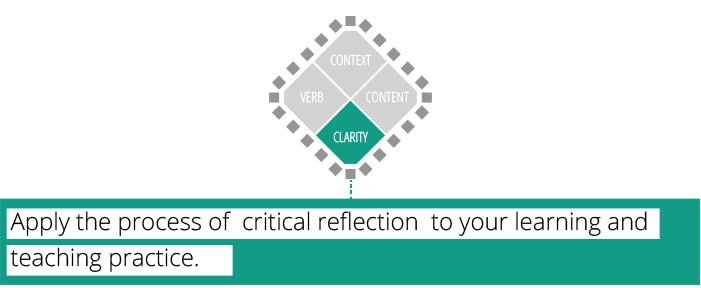
This is clear and easy to read and understand and does not contain jargon. Readability software indicates that this should be easily understood by 17 to 18 year olds, making it more than suitable for a post-graduate audience.
